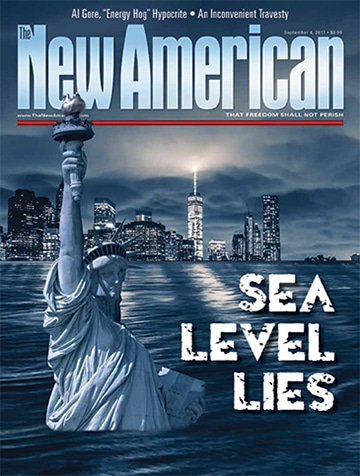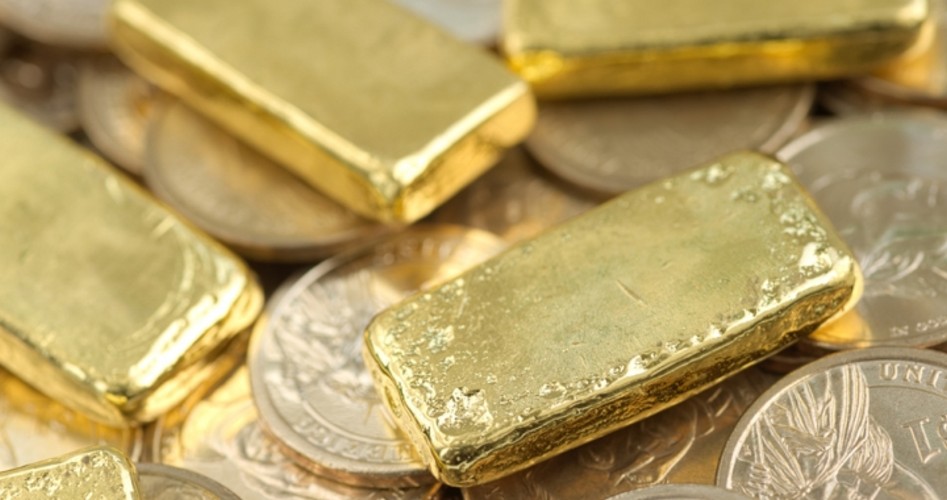Is Gold an Outmoded Currency?
In a world of paper money, ATM machines, debit cards, and cryptocurrencies, it is difficult to imagine a time when all money was based on a precious metal, either gold or silver. But only a few generations ago, all paper money was fully backed by gold or silver — meaning that paper notes could be redeemed on demand for gold or silver — and both gold and silver coins were in daily circulation. What has changed, and is there any reason to believe our modern system of “fiat” currencies is superior to precious metals?
Under the Constitution, a precious metal or “specie” monetary standard is implied by the clause in Article I, Section 8 giving Congress the power to “coin [not “print”!] money, and regulate the value thereof.” That this turn of phrase refers specifically to a gold and silver (or “bimetallic”) monetary system is reinforced by a clause in Article I, Section 10 expressly prohibiting the states from coining money, issuing “bills of credit” (i.e., promissory notes), or making “anything but gold and silver coin a legal tender in payment of debts.”
The Founders, be it noted, were well acquainted with the theory and practice of fiat currency, having endured a lengthy episode of hyperinflation during the Revolutionary War, thanks to the issuance of paper Continental dollars by Congress to fund the war effort. Printing money had been an American pastime since the Massachusetts Bay Colony first began doing it in the early colonial period, and financial disruption had been the inevitable result.
Nowadays, instead of printing presses, computer entries using sophisticated formulas are used to create new money, but in principle, there is no difference between the literal printing of money and the use of a keyboard. In either case, the money supply is determined by some central planning authority (in the modern world, government-run central banks such as the American Federal Reserve system) and not by market demand.
Money is a market good like any other commodity, albeit one with a very specific purpose: the enabling of a system of indirect exchange. Without money in some form, no economy can progress beyond a primitive barter system, whereas a monetary system allows people to buy and sell wherever and whenever they wish, for prices determined by supply and demand. Moreover, because it creates a system of accountancy, money permits the accumulation of capital and wealth far more efficiently and to a much greater extent than mere barter ever can.
But does it make any difference what commodity is chosen to be used as money? After all, things as diverse as stone disks (the Yap Islands) and cigarettes (Allied soldiers during World War II) have been used as money. Why should gold and silver be preferred over a common, easily producible commodity such as paper?
The answer lies in the mischief that governments inevitably perpetrate when they are able to manipulate the money supply. Forever searching for creative ways to raise more revenue, politicians long ago discovered that creating new money to pay for expenses was politically far more palatable than hiking taxes openly. Paper money is the ideal form of currency for such purposes.
There is a catch, however. Increasing the money supply has another name, inflation, and it inevitably leads to rising prices (or, equivalently, falling currency values). Inflation degrades savings and causes enormous economic disruptions over time. It is in fact a form of taxation, albeit a particularly dishonest one, since it extracts wealth from the private sector without advertising its true purposes. Most people are aware of the phenomenon of inflation, but very few understand the real mechanism behind it.
Gold and silver, by contrast, are rare and their supplies are nearly impossible for monetary authorities to manipulate, particularly over the long term. Added to this, they are both exceedingly durable, divisible, and desirable for a wide range of purposes beyond the strictly monetary. Their market value is therefore assured. But because of their scarcity, they will defy all efforts by political and financial authorities to manipulate their supply. During the more than 100 years when the United States (and most of the rest of the world) relied on gold and silver, inflation was virtually unknown, and prices remained more or less stable.
Since the introduction of fiat money (and, in many cases, the outright prohibition of private ownership of monetary gold and silver) in the early 20th century, constant inflation and financial instability have been the result. Moreover, wars have become far more frequent, expensive, and damaging, since governments no longer have to rely on the consent of the tax-paying public (which generally abhors the economic as well as the human costs of war) to finance war. Instead, they can simply print the money, and allow the public to absorb the costs of inflation incurred thereby. It is no coincidence that the uniquely war-prone 20th century was also the greatest age of inflation the world has ever seen.
Nowadays, people advocating a return to a precious metal standard are dismissed as cranks and “gold bugs.” Modern technology and advances in financial and economic science, it is argued, allow monetary authorities to manipulate the money supply to everyone’s advantage, creating far more prosperity than old-fashioned gold and silver ever could. But the facts are at variance with such fatuous justifications. Since the creation of the Federal Reserve in 1913, the U.S. dollar has lost close to 100 percent of its value. While the United States and most “advanced” economies have generally avoided the ravages of hyperinflation that have destroyed savings and societies from Weimar Germany to modern Argentina, the fact remains that, over time, money put in a simple savings account in the United States will steadily lose value. This reality discourages savings and encourages both spending and extreme financial risk-taking, as citizens desperately search for more creative ways to protect their assets from the slow canker of permanent inflation.
The issue of inflation is therefore less economic than moral. Given the power to manipulate the money supply, governments will inevitably abuse it, to the detriment of all but a few privileged elites. A return to constitutionally mandated gold and silver would do much to palliate such abuses.
Photo: Thinkstock



